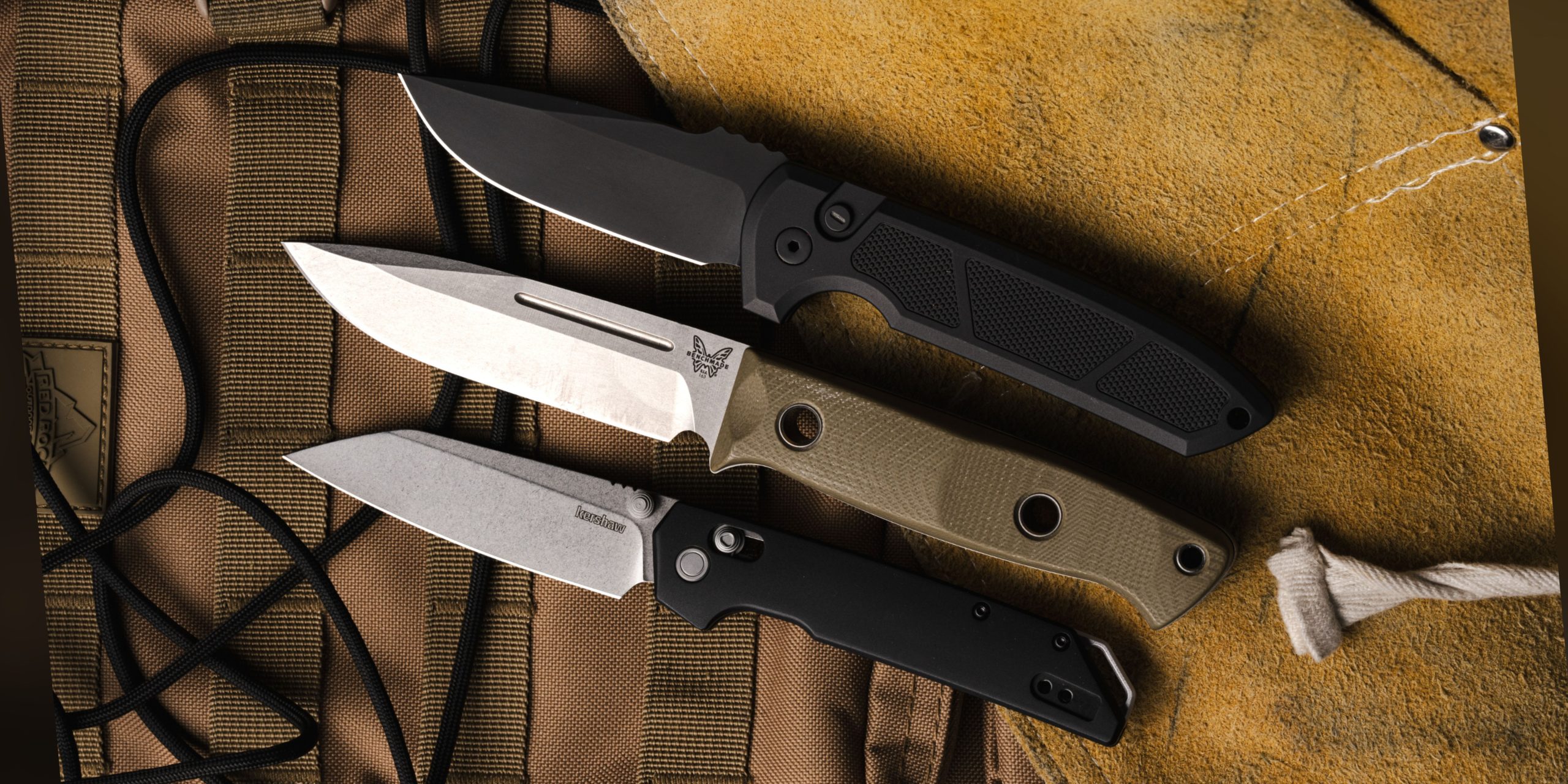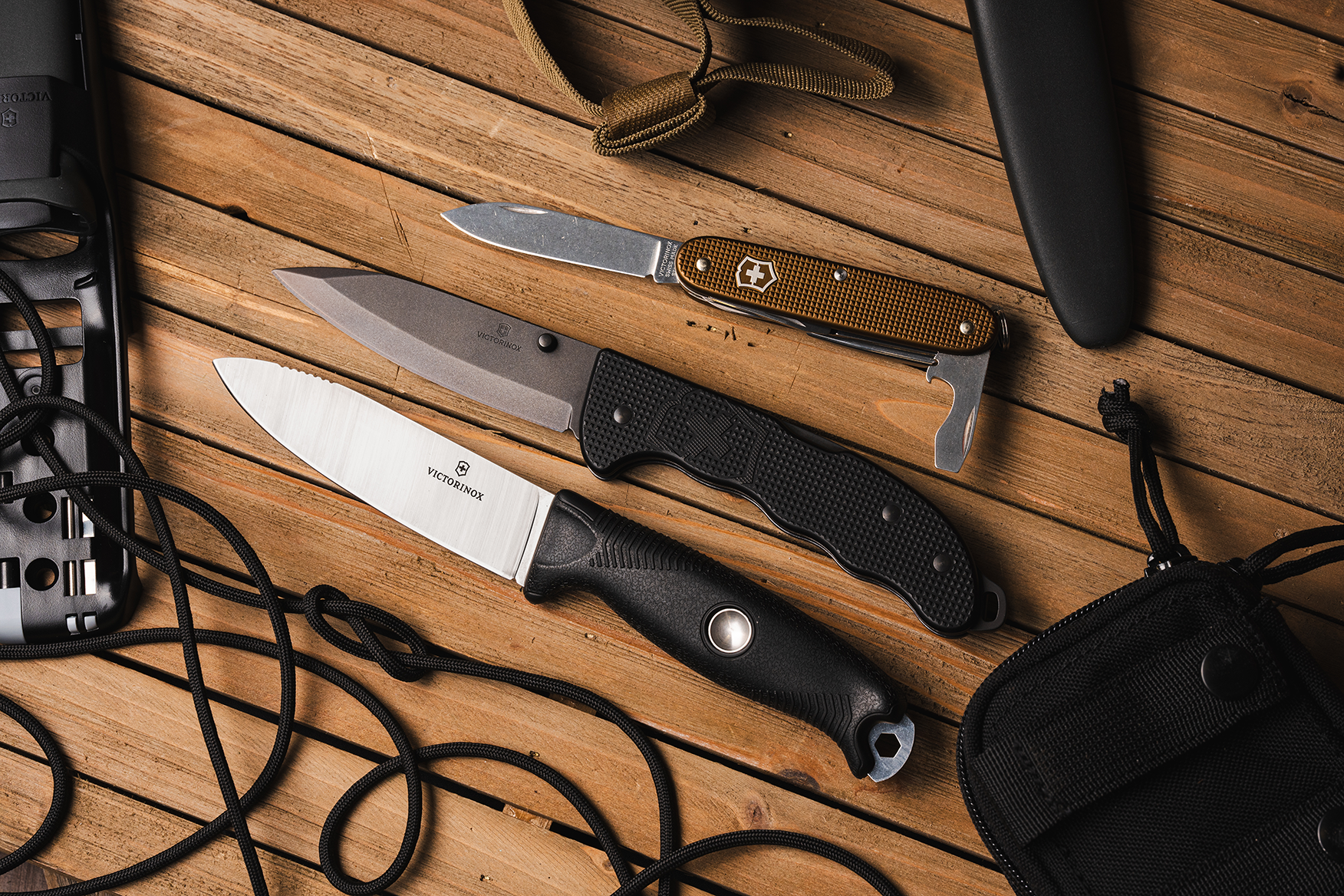This is the fifth in a series of posts about knife modifications you can do yourself, A.K.A. pimping your knife.
I’m convinced that the possibilities are endless when it comes to knife pimping. It’s seriously crazy how many different things people can do to their knives. Today, we’re taking a look at powder coating with some help from Spencer. You might remember his awesome acid-etching work from this post. Dude has skill.
Spencer has done a few powder-coating jobs. Take a look at some Kalashnikovs he did:
The powder-coating process really isn’t too difficult, but there are some special pieces of equipment and materials required.
Materials:
• Color powder—you can find this at Harbor Freight, eastwood.com, or powderbuythepound.com
• Powder-coating gun—available at the same locations as the powder
• Electric Oven, toaster oven, or powder coating oven*
• Air compressor—this doesn’t need to be big, just capable of at least .5 cfm at 5–8 psi. You can find an air compressor at Walmart, Home Depot, or Lowe’s
• Acetone—also available at Walmart, Home Depot, or Lowe’s
• Gloves
• Paperclip/wire hanger
• Cloth/towel
• Handle scale, or any other metal item you want to powder coat. The handles should be a conductive metal like steel or aluminum.
• Dust mask or respirator
*You can use any of these types of ovens, but it cannot be the same one that you’ll be using for food. Once you powder coat, you can’t use the oven for food anymore. This would be a great time to head over to a local thrift shop and spend five or ten bucks on a used toaster, since it will be reserved for non-food purposes only.
Instructions:
While powder coating, you’ll want to make sure you’re in a well-ventilated area. Also just so you know, reassembling the knife after it’s been powder coated typically isn’t a problem, but if your handle has screws that screw into the actual handles and not through them into spacers, it may be difficult to reassemble your knife when you’re done. Spencer didn’t have any problems when he coated his Kalashnikovs.
1. Dissemble your knife. This is necessary to keep the blade and other hardware away from the powder, but keep in mind that dissembling your knife will void any warranty associated with it.
2. Remove any paint, rust, or anything else on the scale that wasn’t there when you purchased the knife. You could sandblast, sand, or use paint stripper to get it off so you can get to the bare metal on the scale.
3. Clean the handles using acetone. While wearing gloves, put some acetone on a cloth and wipe down the handles.
4. Pre-heat the oven to the temperature indicated on the powder coat container. Make sure you’re not using an oven you’ll be cooking food in.
5. Hang the part you’re powder coating. You’ll want to hang the handle because if you don’t, it may have marks from the oven rack when you’re done. Spencer made a super simple “hanger” with a paperclip. He bent a paperclip into an “s” shape and hung the handle from the rack with it.
You can be creative here though—use paperclips, wire, or any other conductive material. Try to hang the handle in such a way that the wire is touching none or very little of the handle, and try to place any wire contacting the handle in an inconspicuous place that won’t really be seen. Once you’ve got the handle situated, put it in the oven for 10 minutes. Make sure the handle isn’t touching any part of the oven walls or rack.
6. Clean the handles again. Rub down the handle with acetone one last time.
7. Coat the handles. From here on out, you’ll want to wear a dust mask or use a respirator, and also make sure you’re in a well-ventilated area. Plug the power supply into a grounded outlet. Maintain about 8 inches between the gun tip and part being coated. Press the activation switch while triggering the gun. (Depressing the activation switch energizes the gun, sending a charge through the powder and causes the powder to stick to your handles.) Make sure to get a nice even coat of powder on your handles. The coated surface will have a dull, opaque coating of powder.
8. Release the activation switch and ground the tip of the gun to the grounding clip.
9. Put the handle back in the oven and watch the magic happen. As it comes up to temperature, the powder will melt and change from a dry look to a wet look. The instructions on the powder container should tell you how long and what temperature to put it in for. (Most instructions indicate around 400 degrees for anywhere from 10 to 20 minutes after the powder has liquefied.)
Be very careful as you move the handle to the oven; don’t blow on it or move it too quickly, or else the powder will be blown off of the handle. If anything happens while moving the handle, you can always reapply the powder by starting over.
10. Enjoy the awesomeness of a newly powder-coated handle. You can reassemble the knife as soon as the handle is cool enough to handle.
That’s it for today! Have a splendid weekend.





what if your just not able to do your own knife will he be willing to do other knife
for people
Hi,
I gave Spencer the email address you left this comment under, so he’ll be getting in touch with you in the near future. Thanks for stopping by!